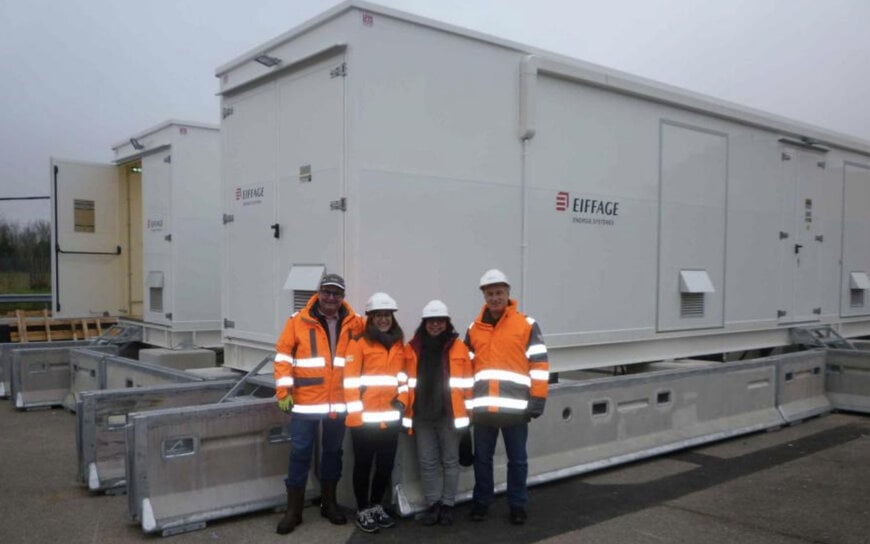www.industryemea.com
26
'25
Written on Modified on
Eiffage Énergie Systèmes installs the substation for the European eRoadMontBlanc demonstrator for Eiffage Route
A French consortium is trialling an electric road at Transpolis for eRoadMontBlanc, with Eiffage Route subcontracting the electrical substation.

The eRoadMontBlanc research and development project aims to decarbonize road freight and long-distance mobility on a massive scale in France and Europe by 2030. Alstom originally developed a ground-level power supply (APS) system to power the Bordeaux tramway, and is now adapting it to Electric Road Systems (ERS).
An open-air laboratory has been set up at the Transpolis Innovation and Safety Test Center in Saint-Maurice-de-Rémens (01), near Lyon, on a former military site dating from the 1930s. Our experts designed and built an electrical substation consisting of two shelters between March 7 and December 12, 2024, to power the 418 m of motorway equipped with Alstom's APS system.
“We connected an initial MV shelter to the existing transformer substation, comprising the HV cells, two MV/LV transformers and a rectifier, which converts AC power (585 V) into 750 V DC, in the same way as for powering a tramway. The Alstom control cabinets forming the heart of the traction system were installed in a second LV shelter. From here, the power cables run to the track, which is lined with an injection manhole and 19 manholes, each equipped with a power supply box,” explained project manager Frédéric Aïta.
The power injected, in rotation, into each of the road sections (at 11m intervals) enables the electric trucks to drive while recharging their batteries. The various trucks and vans travelling at speeds of between 30 and 90 km/h on the track can connect to the electric conductor bars (or rails) embedded in the pavement, using friction pads (contact energy transfer). The dynamic recharging system also enables the number and size of on-board batteries replacing fuel tanks to be optimized.
“If phase 1 of the project, carried out in a test center on a closed road, proves successful, we will move on to phase 2, with another full-scale trial on an open road. This second phase will test the APS system under more severe conditions (major temperature variations, altitude, 4% gradient, etc.) on a 1 km stretch of the N205 at Les Houches in Haute-Savoie,” continued Frédéric Aïta.
Three competing technologies
Two other technologies are currently being trialled in parallel with the European eRoadMontBlanc demonstrator (which is testing the APS system as one of several ground-level conductive solutions). These include the overhead contact line solution developed by Siemens in Germany, and the contactless induction power supply system developed by Electreon in Israel.
“The induction power system will let electric trucks drive, but not recharge their batteries, unlike Alstom's APS system, which will enable trucks to draw between 400 and 500 kWh of energy, including 100 to 150 kWh for driving and the rest for recharging the batteries (350 kWh). In other words, when it leaves the ERS equipped with the APS system, the electric truck will have a range of 200 km”, said Frédéric Aïta.
At the end of these trials, the system selected by the European Union will be chosen to equip France's 8,800 km of motorways, and eventually all the others in Europe.
www.eiffage.com

